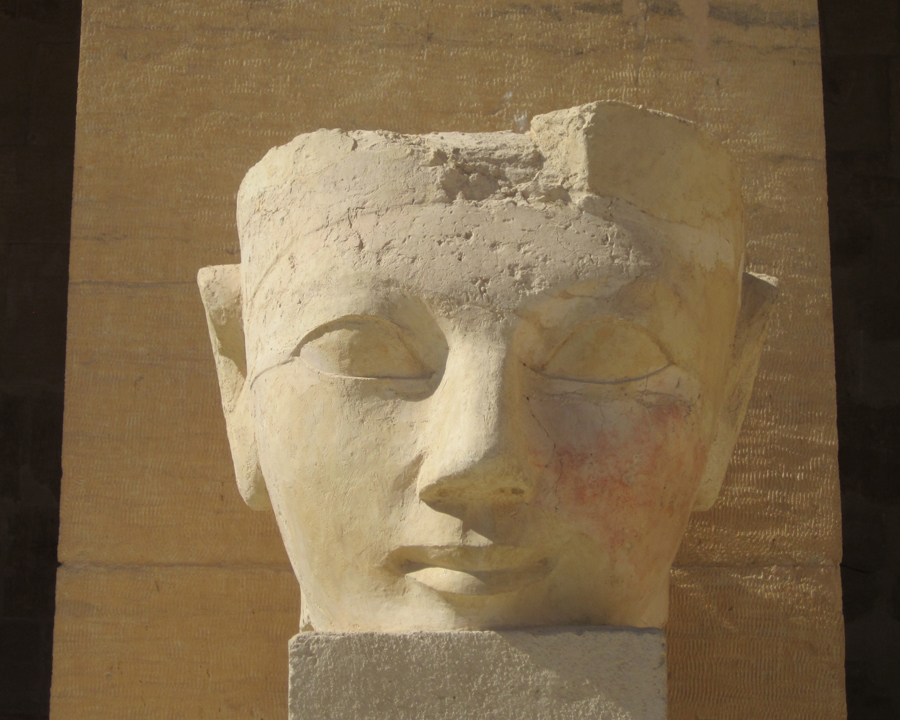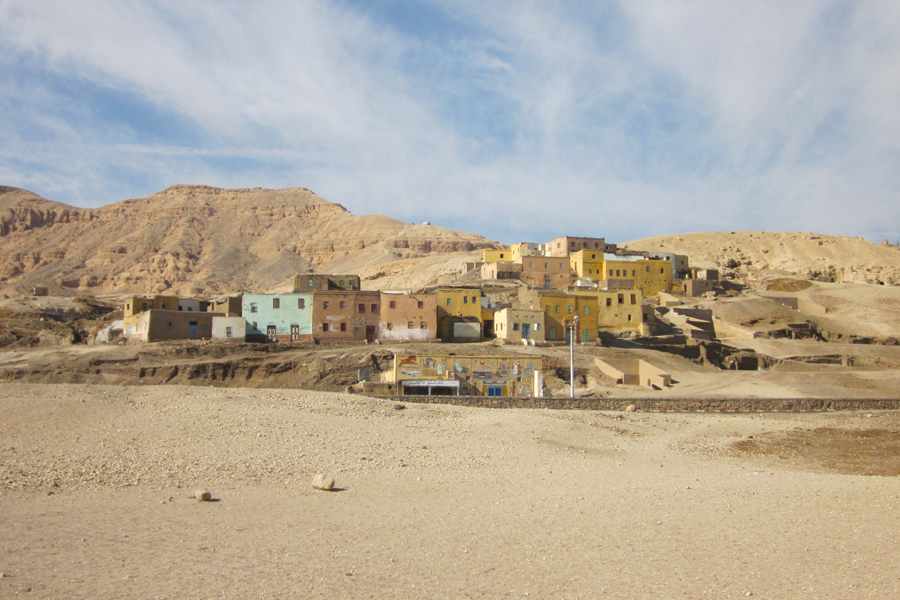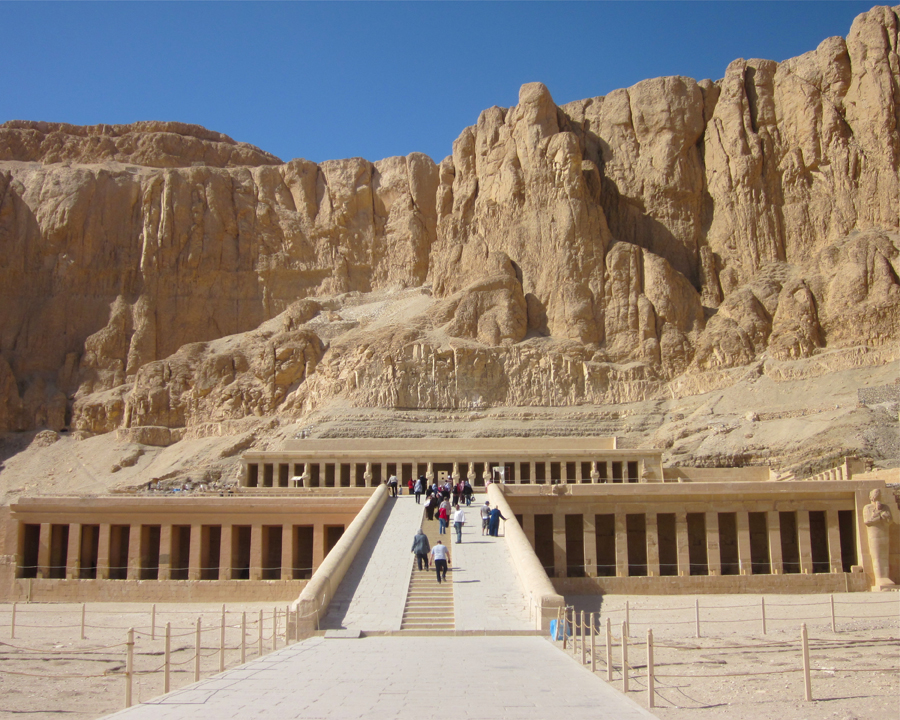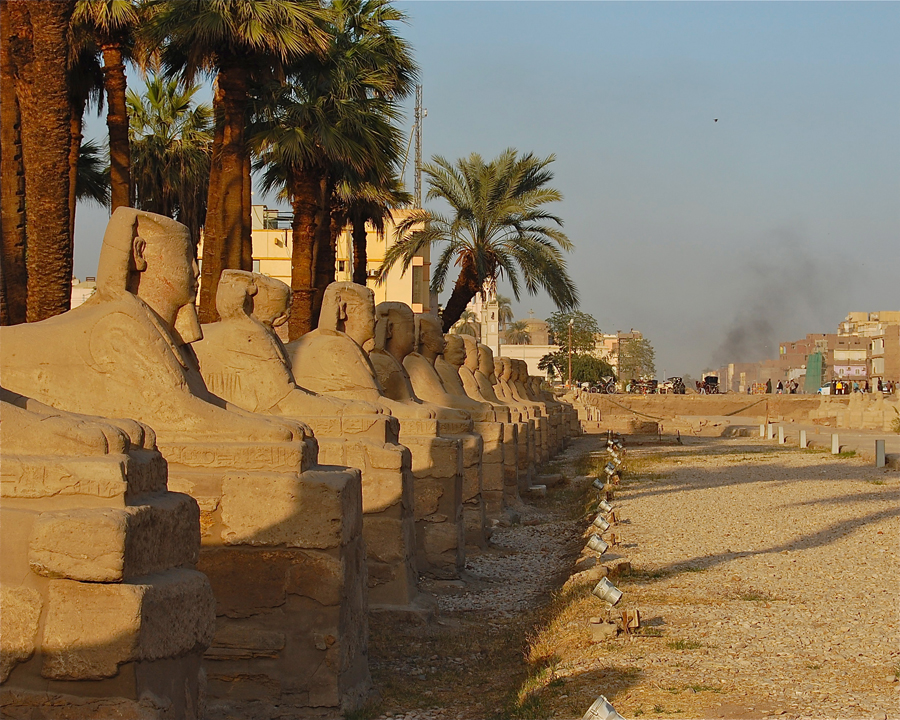Luxor: Eye Within the Storm
As revolutionary protests in Tahrir Square turned deadly, travel in Egypt was sharply curtailed: rail lines were blocked, hijackings threatened highway travelers, and airports barely functioned without the Internet. Five hundred miles to the south in Luxor, life went on unperturbed. Despite sporadic gunfire and small protests, the quiet rhythms of Upper Egypt prevailed: an introspective pace more in keeping with the deep sleep of the pharaohs than with the turmoil in the cities.
Queen Hatshepsut
One of Egypt’s few female pharaohs, Hatshepsut’s reign was long and prosperous (1508-1458 BC). According to an Egyptologist she was "the first great woman in history of whom we are informed."
Dates in a Luxor market
Dates have been grown in Egypt for over 5,000 years and remain an important food source throughout the Middle East. A handful of dates has about the same antioxidant activity as a half-glass of red wine.
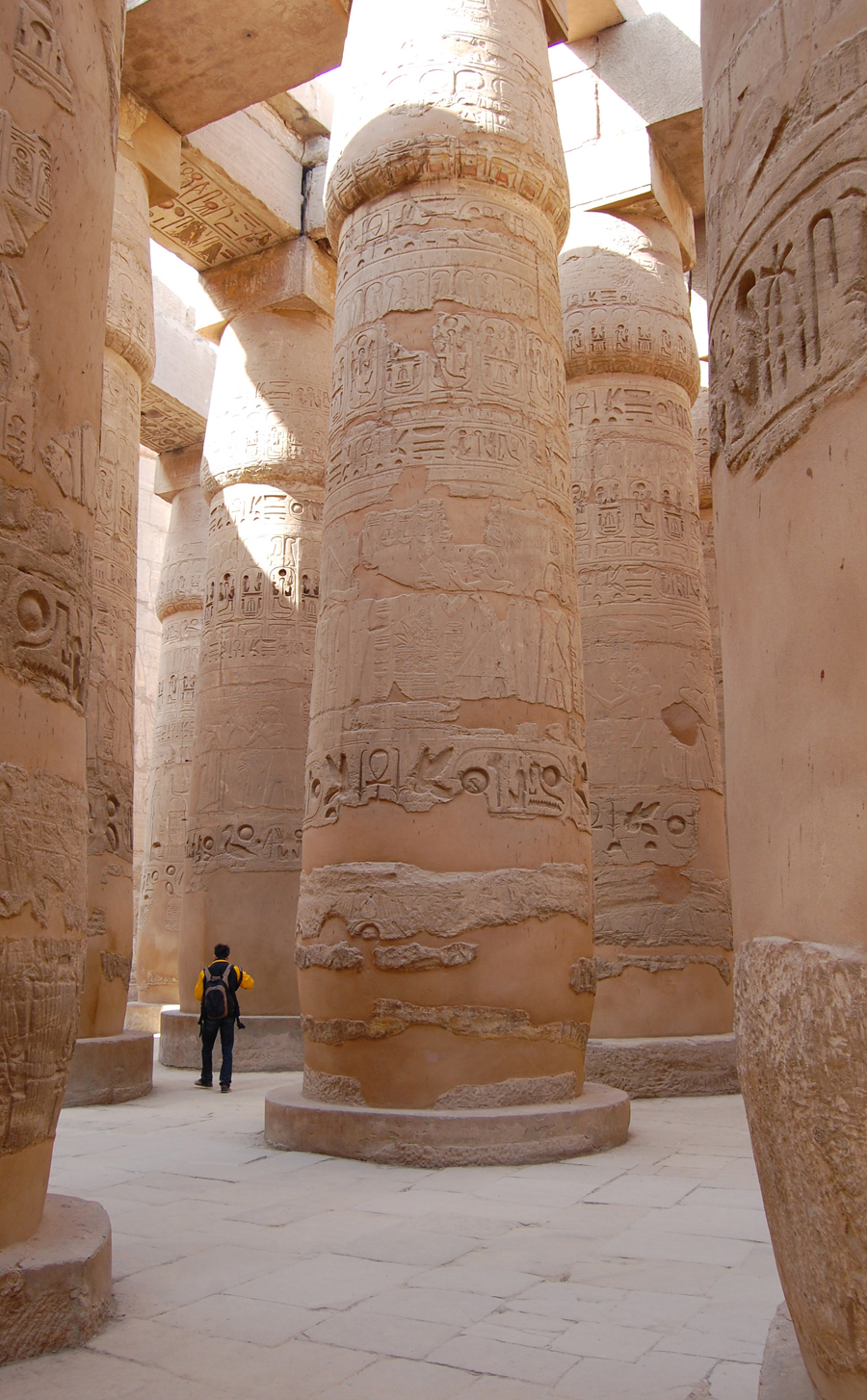
The Great Hypostyle Hall, Karnak Temple
Village near Valley of the Kings
On the sleepy west bank of the Nile across from Luxor (ancient Thebes) lies the Valley of the Kings, royal burial site of Egypt’s pharaohs for more than 500 years. The richly painted and once opulent tombs of Tutankhamun, Ramesses, Amenhotep, and others are cut deeply into the yellow limestone cliffs behind this village.
Mortuary temple of Hatshepsut (c. 1480 BC)
Queen Hatshepsut’s temple at Deir el-Bahri is an architectural masterpiece of grace and symmetry, located at one of the hottest places on earth.
Avenue of the Sphinxes, Luxor Temple
Ancient sphinxes watch modern history unfold as smoke rises from the site of a demonstration in Luxor. In Cleopatra’s day, religious processions followed this 1-5-mile path connecting Luxor and Karnak Temples.
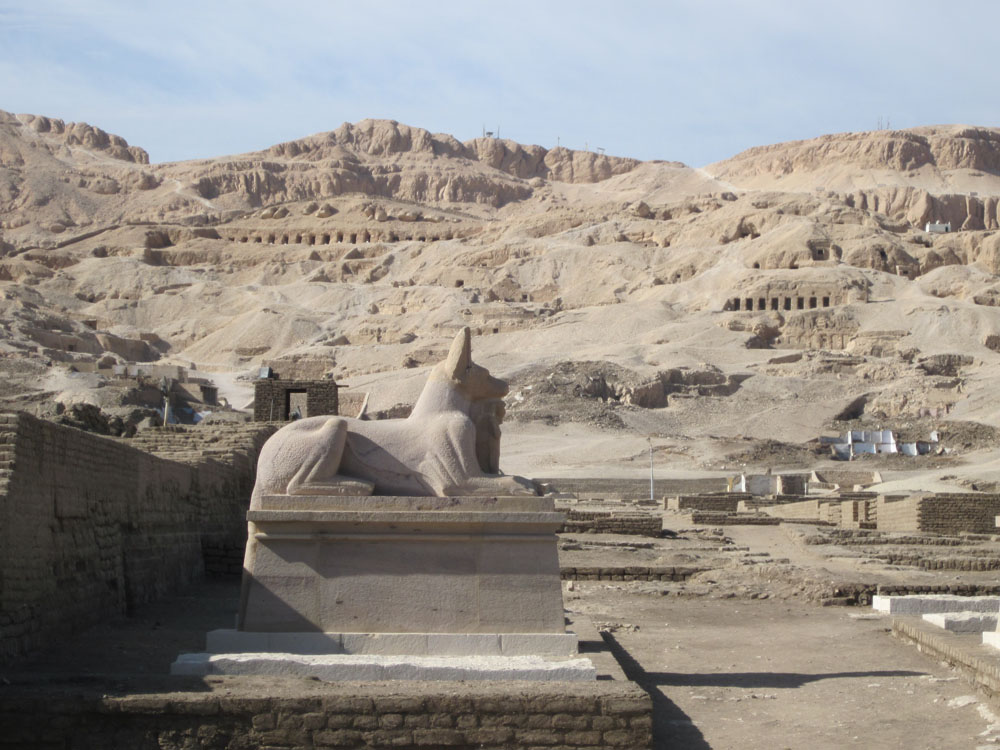
Anubis, canine guardian of the dead
The most important funerary deity in ancient Egypt, Anubis, a jackal, presides over mummification and guards burial sites, including the cliff-cut Tombs of the Nobles.

Moored on the Nile at Luxor
The tranquility of Upper Egypt was largely unmarred by the revolutionary fervor in Cairo.

Buffalo with Hajj mural
Mud brick houses in Upper Egypt are decorated with brightly painted scenes from the Hajj, the Muslim pilgrimage to Mecca, as well as bucolic scenes of village life. A worn yellow shoe hangs from the buffalo's neck, perhaps to identify it as the owner’s.

